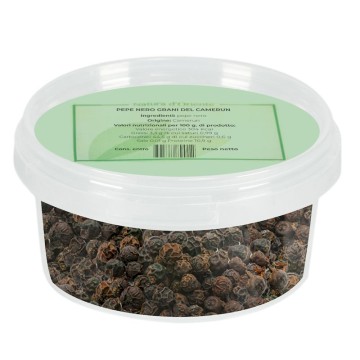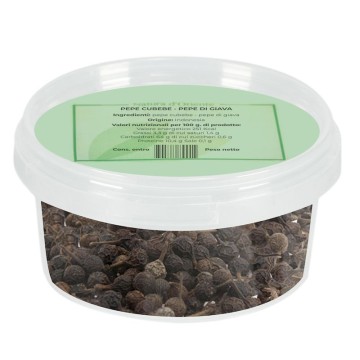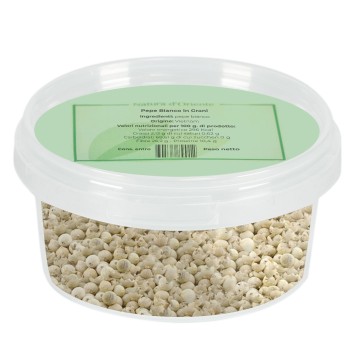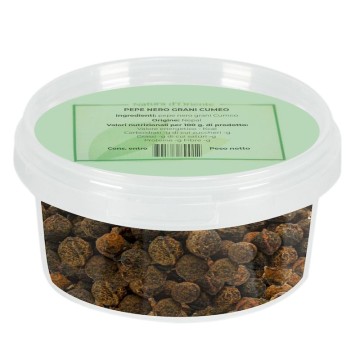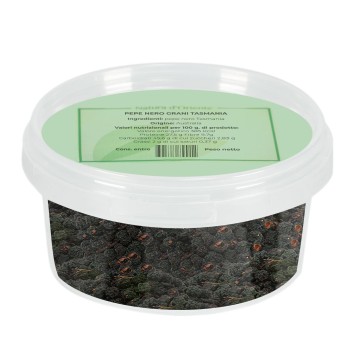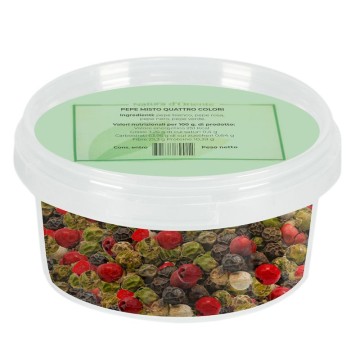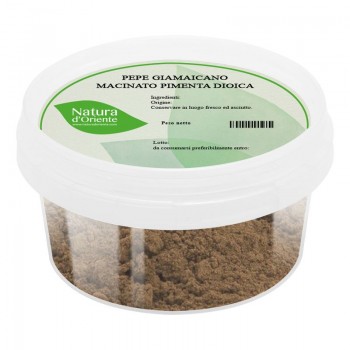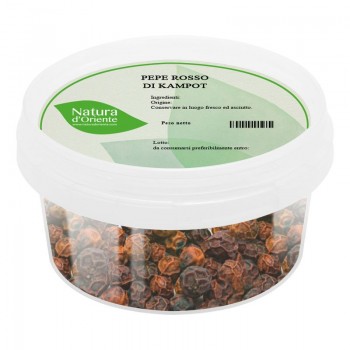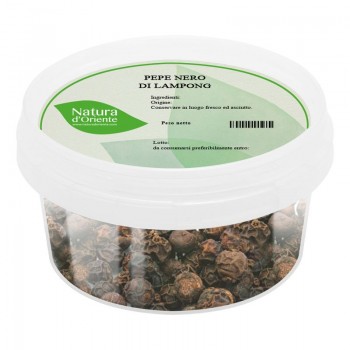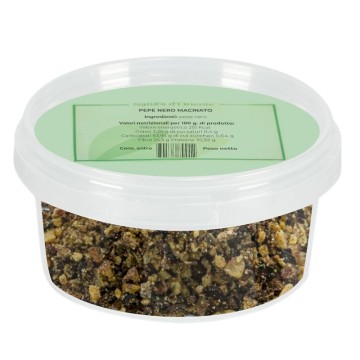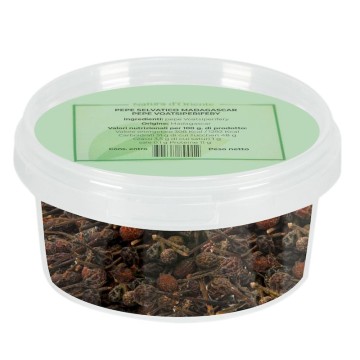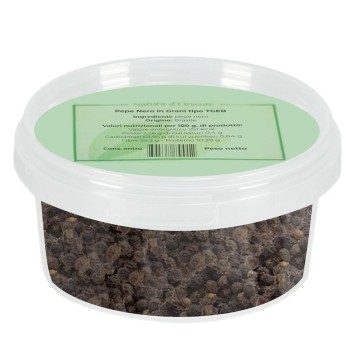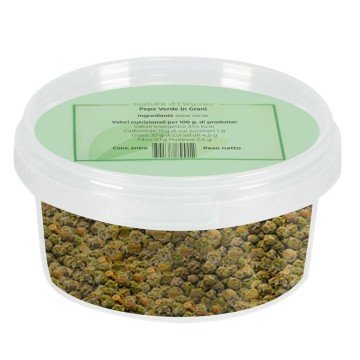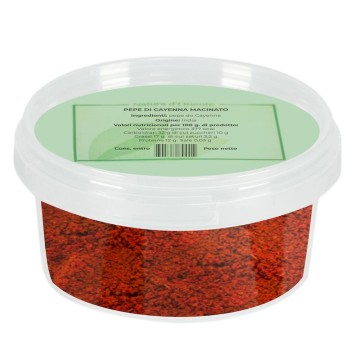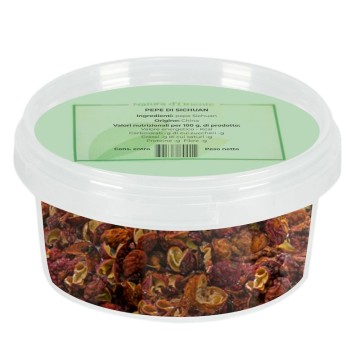Banasura black pepper is a particular type of black pepper , its main characteristics are the visual one of the greater size of the grains and a particularly intense aroma , the result of both the production method and the particular environment in which it grows.
The plant and the fruit
The pipper nigrum is a woody liana (a climbing plant that starts from the ground and climbs on the stem of other plants) that is normally grown up to 4 meters, but in the case of the plants from which Banasura pepper is obtained, it goes much higher. The plant that belongs to the Piperaceae family has 5 to 10 cm long leaves and sessile flowers (attached to the main stem without a peduncle). The fruit is a green berry first, then red when ripe, which contains a single seed.
The production of Banasura pepper
First of all, the particular characteristics of Banasura pepper are due (as always when it comes to pepper) to the environment in which it grows, Banasura takes its name from a hill called Banasura Hill (a peak of 2000 meters) which is located in the state of Kerala, therefore the same state of southwestern India from which Tellicherry also comes, but here we are talking about the mountainous area behind the coastal area, at the foot of the aforementioned hill there is a very famous dam, the Banasura dam which is very important not only for hydroelectric production but also as a water reserve for all the crops that surround it in an area that would otherwise suffer from scarcity of water in some seasons.
The second point is the production process, as anticipated the farmers in this area make the plants climb to much greater heights than elsewhere, up to 12 meters according to some sources, even 15 according to others. The harvest is then delayed, the berries are harvested when fully ripe, hence the size of the grains. Harvesting, as for other types of fine peppers, is done strictly by hand, followed by drying in a natural way and then smoking with beech wood smoke.
The aroma of Banasura pepper
Such a late harvest allows the Banasura pepper to develop a very strong aromaticity, the spiciness is also present but not extreme, the size of the grains could suggest otherwise, a larger berry it also means more piperine in the pulp and not only in the peel, but the most notable characteristic of Banasaura is certainly its aromaticity.
Smoked Banasura pepper in the kitchen
The not excessive spiciness makes it a versatile pepper , but the most suitable combinations are certainly with meat and fish in addition to 'use in various sauces to which it gives its extraordinary aroma. Precisely in order not to lose this aromaticity, it is advisable to consume it whole or pounded in a mortar, if you really want to grind it it is better to do it at the moment. Banasura pepper due to its aromaticity is particularly appreciated in the preparation of pepper steak as an alternative to other slightly spicy and aromatic peppers such as green pepper.
Banasura pepper steak
- Fillet of beef or steaks on the bone or loin of beef 600 gr
- Smoked banasura pepper in grains 2 tablespoons
- Butter 1 tablespoon
- Extra virgin olive oil 2 tablespoons
- Brandy or Calvados - 3 tablespoons
- Cream 150 ml Dijon mustard 1 tablespoon
- Salt to taste
- Flour 1 teaspoon
Preparation
1) Crush the peppercorns in a mortar.
2) Remove excess fat from steaks.
3) Rub the meat with the crushed pepper, covering it evenly.
4) Heat the extra virgin olive oil in a large saucepan, add the butter and let it melt.
5) Then add the meat and let it brown for 6/7 minutes, turning it once.
6) At this point, take the meat and keep it warm.
7) Add the brandy or calvados wine to the cooking sauce and let it boil until everything is reduced by half.
6) Add the cream and mustard to the cooking sauce.
7) Boil for about 4 minutes or until the cream has reduced to 1/3.
8) Dissolve the wheat flour in the water and pour this mixture into the sauce to thicken it a little more; season with salt.
9) Serve the nappa meatta with the freshly made sauce and accompanying it with french fries.
Recipe source: Cookaround.com

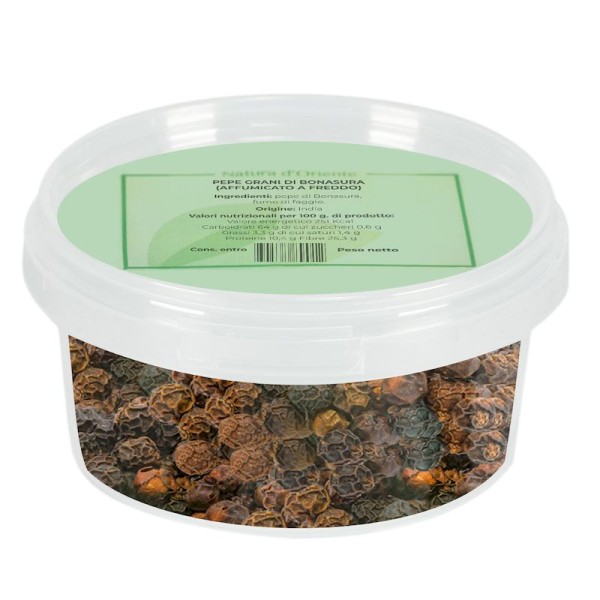







 No reward points for this product.
No reward points for this product.
